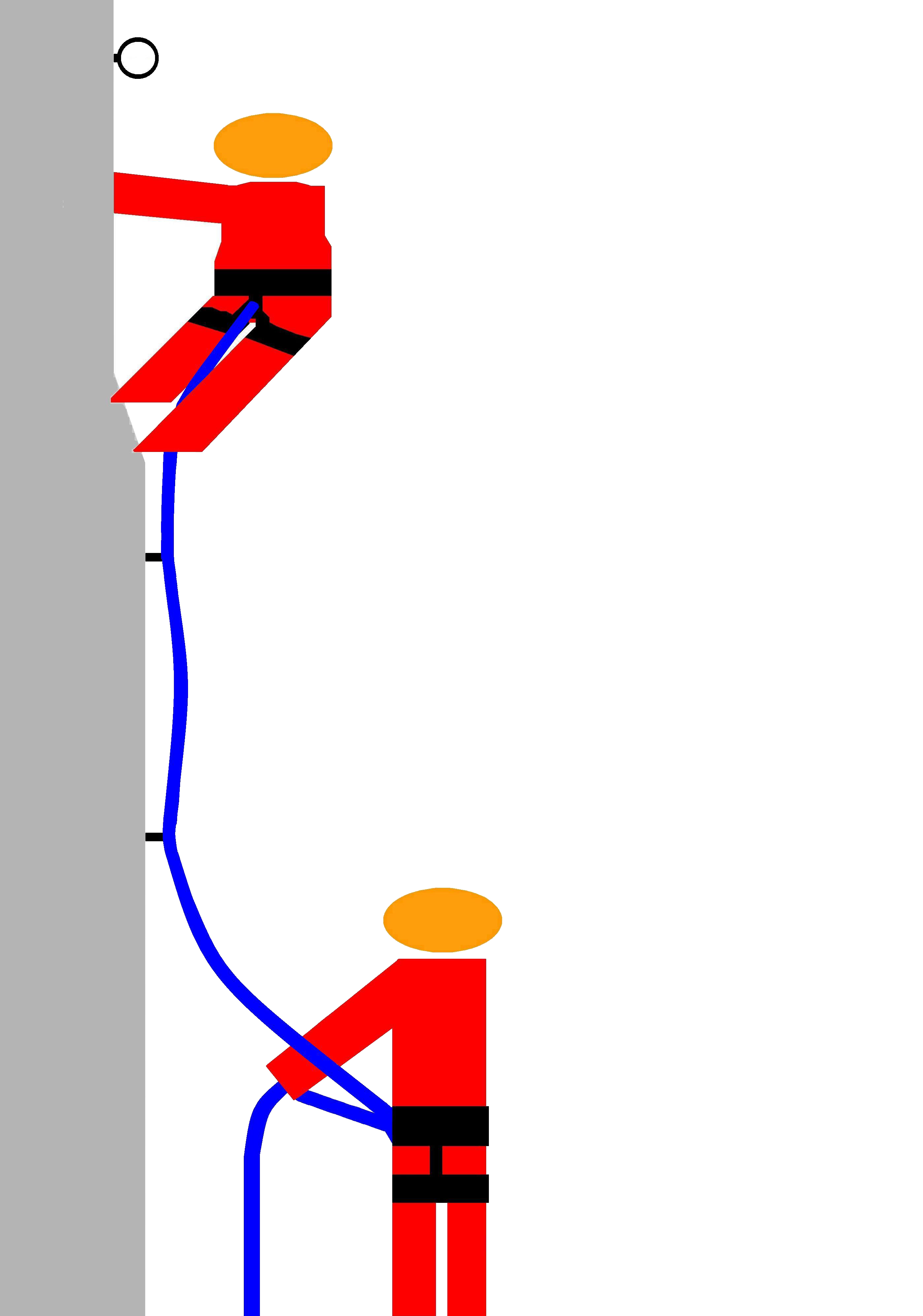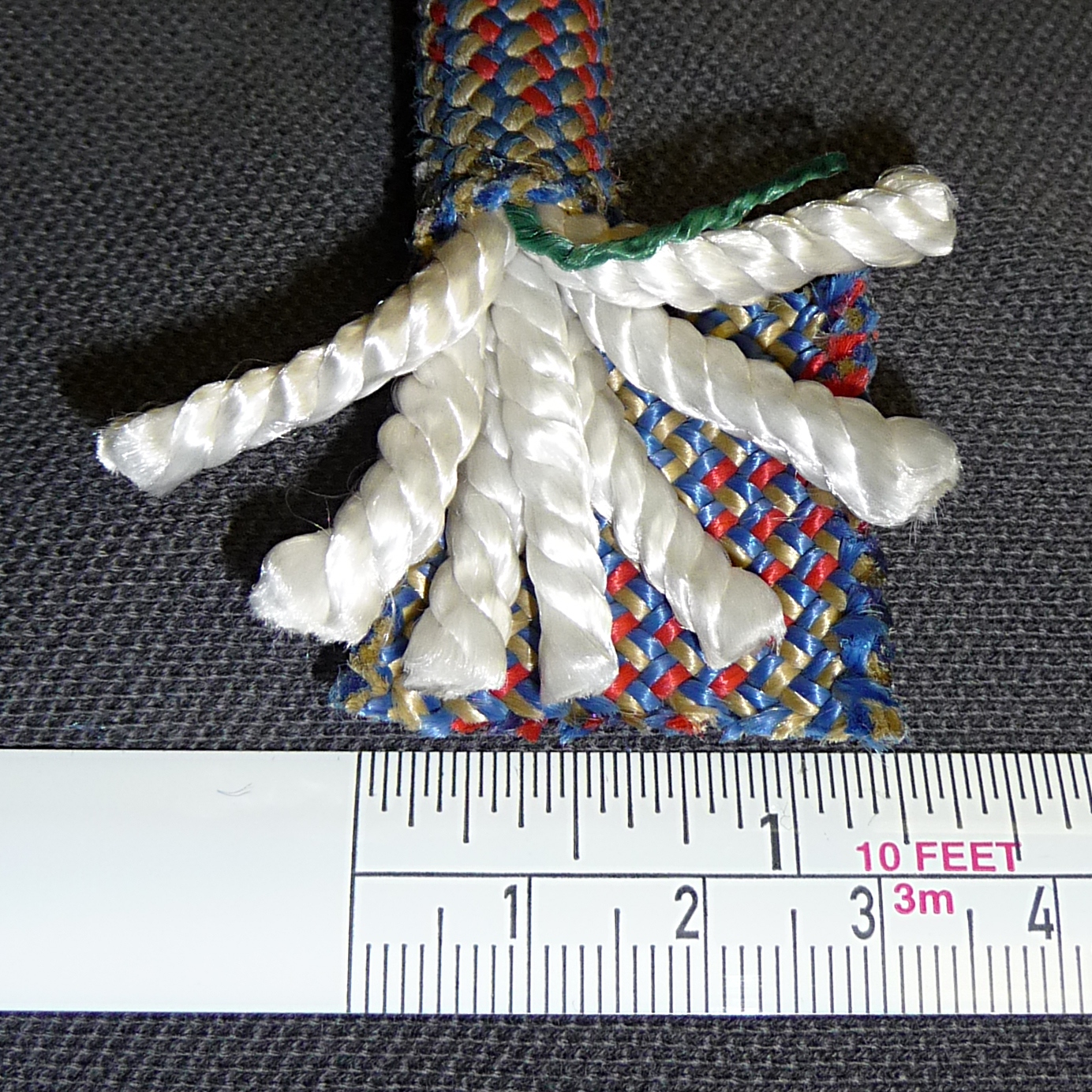|
Static Rope
A static rope is a low-elongation rope that is designed to stretch minimally when placed under load, typically less than 5%. In contrast, a dynamic rope is designed to stretch up to 40%. Static ropes have a wide variety of uses, for instance in fire rescue operations and caving. Static ropes have some applications in climbing, such as hauling gear, though lead climbing is always done with a dynamic rope, since a fall on a static rope is stopped too quickly and may lead to serious injury. Abseiling, however, is best done with a static rope or with a dynamic rope with low elasticity. Among other things, static ropes are often used for hauling up gear and other things. because of their low elongation and high weight limit, they excel at doing this job. See also *Kernmantle rope Kernmantle rope () is rope constructed with its interior core protected by a woven exterior sheath designed to optimize strength, durability, and flexibility. The core fibers provide the tensile strength ... [...More Info...] [...Related Items...] OR: [Wikipedia] [Google] [Baidu] |
Rope
A rope is a group of yarns, Plying, plies, fibres, or strands that are plying, twisted or braided together into a larger and stronger form. Ropes have high tensile strength and can be used for dragging and lifting. Rope is thicker and stronger than similarly constructed cord, String (structure), string, and twine. Construction Rope may be constructed of any long, stringy, fibrous material (e.g., rattan, a natural material), but generally is constructed of certain natural fibre, natural or synthetic fibre, synthetic fibres. Synthetic fibre ropes are significantly stronger than their natural fibre counterparts, they have a higher tensile strength, they are more resistant to rotting than ropes created from natural fibres, and they can be made to float on water. But synthetic ropes also possess certain disadvantages, including slipperiness, and some can be damaged more easily by UV light. Common natural fibres for rope are Manila hemp, hemp, linen, cotton, coir, jute, straw, an ... [...More Info...] [...Related Items...] OR: [Wikipedia] [Google] [Baidu] |
Dynamic Rope
A dynamic rope is a specially constructed, somewhat elastic rope used primarily in rock climbing, ice climbing, and mountaineering. This elasticity, or stretch, is the property that makes the rope dynamic—in contrast to a static rope that has only slight elongation under load. Greater elasticity allows a dynamic rope to more slowly absorb the energy of a sudden load, such from arresting a climber's fall, by reducing the peak force on the rope and thus the probability of the rope's catastrophic failure. A kernmantle rope is the most common type of dynamic rope now used. Since 1945, nylon has, because of its superior durability and strength, replaced all natural materials in climbing rope. Rope types Dynamic climbing ropes are classified into three categories: Single ropes, twin ropes, and half ropes (also referred to as 'double ropes'). *Single ropes are designed to be used alone, and are by far the most common, and used for top-roping, sport climbing, and trad climbing. * ... [...More Info...] [...Related Items...] OR: [Wikipedia] [Google] [Baidu] |
Caving
Caving, also known as spelunking (United States and Canada) and potholing (United Kingdom and Ireland), is the recreational pastime of exploring wild cave systems (as distinguished from show caves). In contrast, speleology is the scientific study of caves and the cave environment.Caving in New Zealand (from Te Ara: The Encyclopedia of New Zealand, Accessed 2012-11.) The challenges involved in caving vary according to the cave being visited; in addition to the total absence of light beyond the entrance, negotiating pitches, squeezes, and water hazards can be difficult. [...More Info...] [...Related Items...] OR: [Wikipedia] [Google] [Baidu] |
Climbing
Climbing is the activity of using one's hands, feet, or other parts of the body to ascend a steep topographical object that can range from the world's tallest mountains (e.g. the eight thousanders) to small boulders. Climbing is done for locomotion, sporting recreation, for competition, and is also done in trades that rely on ascension, such as construction and military operations. Climbing is done indoors and outdoors, on natural surfaces (e.g. rock climbing and ice climbing), and on artificial surfaces (e.g. climbing walls and climbing gyms). The sport of climbing evolved by climbers making first ascents of new types of climbing routes, using new climbing techniques, at ever-increasing grades of difficulty, with ever-improving pieces of climbing equipment. Guides and guidebooks were an important element in developing the popularity of the sport in the natural environment. Early pioneers included Walter Bonatti, Riccardo Cassin, Hermann Buhl, and Gaston Rébuffat, wh ... [...More Info...] [...Related Items...] OR: [Wikipedia] [Google] [Baidu] |
Lead Climbing
Lead climbing (or leading) is a technique in rock climbing where the 'lead climber' Glossary of climbing terms#clip in, clips their rope to the climbing protection as they ascend a pitch (climbing), pitch of the climbing route, while their 'second' (or 'belayer') remains at the base of the route belaying the rope to protect the 'lead climber' in the event that they fall. The term is used to distinguish between the two roles, and the greater effort and increased risk, of the role of the 'lead climber'. Leading a climb is in contrast with top roping a climb, where even though there is still a 'second' belaying the rope, the 'lead climber' faces little or no risk in the event of a fall and does not need to clip into any protection as the rope is already Anchor (climbing), anchored to the top of the route (i.e. if they fall off, they just hang from the rope). Leading a climbing route is a Rock climbing#Description, core activity in rock climbing, and most first ascents and first fr ... [...More Info...] [...Related Items...] OR: [Wikipedia] [Google] [Baidu] |
Abseiling
Abseiling ( ; ), also known as rappelling ( ; ), is the controlled descent of a steep slope, such as a rock face, by moving down a rope. When abseiling, the person descending controls their own movement down a static or fixed rope, in contrast to Belaying, lowering off, in which the rope attached to the person descending is paid out by their belayer. Description The technique is used by Climbing, climbers, mountaineers, Caving, cavers, Canyoning, canyoners, search and rescue and rope access technicians to descend cliffs or slopes when they are too steep or dangerous to descend without protection. Many climbers use this technique to protect established Anchor (climbing), anchors from damage. Rope access technicians also use this as a method to access difficult-to-reach areas from above for various industrial applications like maintenance, construction, inspection and welding. To descend safely, abseilers use a variety of techniques to increase the friction on the rope to t ... [...More Info...] [...Related Items...] OR: [Wikipedia] [Google] [Baidu] |
Kernmantle Rope
Kernmantle rope () is rope constructed with its interior core protected by a woven exterior sheath designed to optimize strength, durability, and flexibility. The core fibers provide the tensile strength of the rope, while the sheath protects the core from abrasion during use. This is the only construction of rope that is considered to be life safety rope by most fire and rescue services. Parachute cord Parachute cord (also paracord or 550 cord when referring to type-III paracord) is a lightweight nylon kernmantle rope originally used in the suspension lines of parachutes. This cord is useful for many other tasks and is now used as a general purpose utility cord by both military personnel and civilians. Use as climbing rope One of the uses of kernmantle rope is as climbing rope. Nylon ropes that were used in yachts for hauling were tested and found useful in climbing and caving and are now the modern standard. The German company Edelrid introduced the first kernmantel rope i ... [...More Info...] [...Related Items...] OR: [Wikipedia] [Google] [Baidu] |
Climbing Equipment
Climbing equipment refers to a broad range of manufactured gear that is used in the activity or sport of climbing. Notable groups include: * Alpine climbing equipment as is used in alpine climbing and mountaineering * Deep-water soloing equipment as is used in deep-water soloing * Ice climbing equipment as is used in ice climbing and mixed climbing * Mixed climbing equipment as used in mixed climbing and dry-tooling * Mountaineering equipment as is used in mountaineering and alpine climbing * Rock-climbing equipment as is used in aid climbing, bouldering, competition climbing, free solo climbing, multi-pitch climbing (including big wall climbing), rope solo climbing, sport climbing Sport climbing (or bolted climbing) is a type of free climbing in the sport of rock climbing where the Lead climbing, lead climber clips their climbing rope, rope — via a quickdraw — into pre-drilled in-situ bolt (climbing), bolts for their ..., traditional climbing and top rope climbin ... [...More Info...] [...Related Items...] OR: [Wikipedia] [Google] [Baidu] |
Ropes
A rope is a group of yarns, plies, fibres, or strands that are twisted or braided together into a larger and stronger form. Ropes have high tensile strength and can be used for dragging and lifting. Rope is thicker and stronger than similarly constructed cord, string, and twine. Construction Rope may be constructed of any long, stringy, fibrous material (e.g., rattan, a natural material), but generally is constructed of certain natural or synthetic fibres. Synthetic fibre ropes are significantly stronger than their natural fibre counterparts, they have a higher tensile strength, they are more resistant to rotting than ropes created from natural fibres, and they can be made to float on water. But synthetic ropes also possess certain disadvantages, including slipperiness, and some can be damaged more easily by UV light. Common natural fibres for rope are Manila hemp, hemp, linen, cotton, coir, jute, straw, and sisal. Synthetic fibres in use for rope-making include ... [...More Info...] [...Related Items...] OR: [Wikipedia] [Google] [Baidu] |







